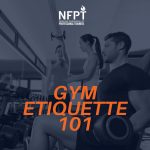
Clients seek out personal training for a myriad of reasons. For trainers, our job is made infinitely easier when a client comes to us seeking nutritional modifications/weight loss, increased muscle mass, or improved endurance.
However, I have a few clients who look forward to their personal training hour for reasons fairly unrelated to the gym. They either need time away from their children, a mental stress release, or simply some ‘me time’. Often I feel as if I double as a psychiatrist with these clients! It is fine with me, as long as they are deriving what they need from our time together.
What about that rare client who does not have a clear roadmap? Maybe emotional upheaval – death in the family, divorce, or unemployment – has made them reconsider their lives. They may want to change, but are too emotionally out of synch to make any measurable progress.

When Do We Suggest Another Path?
As much as would like to believe that we can improve any client’s life through fitness and health coaching education, there does come a time when what we have to offer simply is not our client’s best interests. Rather than turn such individuals out on the street without resources, it behooves us to be informed and able to suggest an alternate route.
As true professionals, there does come a day of reckoning when we realize that the gym floor is not going to be a salvation for every individual. While we know inherently that endorphins are released during exercise, and how very uplifting this can be in terms of mood and mental clarity, there are infinite ways other than personal training for a client to “be a verb” and move in a manner that suits him/her. Recent research has shed some light on the more therapeutic aspects of dance. We seem to just “feel better” when we move our bodies, whether it is with a sense of freedom or to a pulsing rhythmic beat. Professionals have taken this awareness to the next level and have found a way to blend the art of dance with psychotherapy, yielding surprisingly positive results.
Integrating Dance
Imagine creating movements that specifically align with thoughts and feelings, in an effort to address dysfunctional psychological, physical and relationship patterns. How liberating might it feel to “dance out” emotions that have been embedded in unconscious habits and behaviors? Experts in the field of Dance/Movement Psychotherapy believe it may be possible to link healthy rehabilitative exercises with fundamental changes in self-experience, development, body image and life direction. By reawakening emotional expression and pairing it with dance movements, one connects feelings with physical sensations of freedom, thereby easing stress and maladaptive behaviors, with the final result being a clearer vision of oneself and one’s potential.
The American Dance Therapy Association (ADTA) defines their objective as “the psychotherapeutic use of movement as a process that furthers the emotional, cognitive, social and physical integration of the individual.” No longer limited to the confines of a traditional dance studio, these therapists work in settings that include psychiatric and rehabilitation facilities, schools, nursing homes, drug treatment/counseling centers, medical facilities, crisis centers, and wellness/alternative health care centers. Since 2000, the ADTA has blossomed into an organization comprised of 955 professional members, including international members in Argentina, Australia, Canada, England, France, Germany, Hong Kong, Ireland, Israel, Italy, Japan, Korea, Mexico, Norway, Puerto Rico, Scotland, Spain, Sweden, Switzerland, and The Netherlands.
The next time you sense that a client is wrestling with a personal issue or internal dilemma, and resistance training just is not working, suggest that instead of lifting weights, he/she put on some music and start moving. No rules exist. If the client seems hesitant at first, remind him/her that this “session” can easily be accomplished in the comfort and privacy of his/her own living room. Remind the client to allow the beat to speak to his/her body. You might even try this yourself. Close your eyes, allow the rhythm to take control of all of your senses, and let the healing begin.







